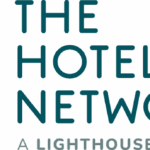 The Covid-19 epidemic has given life to every area of society. The shutdown of educational institutions to prevent the propagation of the virus was one of the most rapid actions made. The lockdown made the country see a roller-coaster effect on the economy, but it mainly affected educational backgrounds.
The Covid-19 epidemic has given life to every area of society. The shutdown of educational institutions to prevent the propagation of the virus was one of the most rapid actions made. The lockdown made the country see a roller-coaster effect on the economy, but it mainly affected educational backgrounds.
According to a national survey in Delhi, there were psychological impacts observed on students’ Mental and Physical health after the lockdown implementation that lead to frustration in different age groups. “The satisfaction levels survey among students revealed that 38.3% of the students responded negatively to online classes; 33.4% saw it as an average, and 28.4% found it to be favorable.” Moreover, their health conditions had tremendous changes in sleeping patterns, daily workout routines, and social contacts.
The question is, how can institutions and organizations take the brilliant initiative by adopting the exciting ideas of eLearning with the help of technology? Does technology have a contributing role in the system? – Let’s dive into the significance of technology and find a way out!
In such challenging times, IT sectors worked as a curative for students’ mental health by bringing the more significant experience of eLearning with incremental updates and more innovative tools. Artificial intelligence is one disruptive approach that allows the experience of many students, teachers, tutors and institutes.
How AI transforms the learning experience
Artificial Intelligence being one of the most intellectual branches of science, produces and studies machines for the promotion of processes in human intelligence. The principal goal of AI is to optimize the routine procedures, speed and efficiency. As a result, there has been an increased adoption ratio of companies opting for AI.
AI instruments mainly comply with three fundamental principles:
Learning: To acquire and process the new experience and create new behavioral patterns.
Self-rectification: By refining algorithms in order to assure the best results.
Motivation: By collecting specific algorithms to accomplish a particular issue.
In terms of major opportunities, AI tools are open for all sectors, including education. Technology adoption with the help of different types of education software seemed to be one of the best ways in which firms are transformed.
Multiple roles of AI in education
Global usage of technology transforms our teaching and learning process. Artificial intelligence is one radical approach that allows the personalized experience of many teachers and tutors.
AI can be used to improve and transform study processes:
1. Personalized Education
Artificial intelligence helps to discover what a student does and doesn’t know and creates a customized curriculum for each learner, given the gaps in knowledge. In order to meet the specific needs of the students, AI adapts studies and improves their efficiency.
To do this, several organizations equipped with knowledge space theory train their AI’s to describe the gaps in knowledge, taking into consideration the complexity of the relationship between science theories.
2. Smart Content Production
-
- Digital lessons – AI may be used to produce digital learning interfaces with customisation possibilities, digital textbooks, guides, bites and more.
- Visualizing information – AI can drive new ways of experiencing information, such as visualization, simulation, web-based studies.
- Updates for learning content – AI also helps develop, update, and keep the information open for various learning trajectories and customize it for the different courses.
3. Contribution To Task Automation
Simplification of administrative tasks: grading, assessment and student response is a long-term activity that teachers with AI may optimize.
Do you recall what Gmail says in your messages based on the summary of the messages you have received and the key vocabulary of your business? It would be excellent if such an option were provided for feedback from every learning management system or learning platform.
Giving teachers mundane chores helps make way for something more important: the focus on classifying work that cannot be delegated to artificial intelligence, self-education and increasing the class quality.
4. Tutoring
Continuous developments in personal studies take account of student gaps in each class. Private tutoring and support for pupils outside the classroom will assist students in keeping up with their courses and prevent their parents from having difficulty explaining math to their children. AI tutors save teachers significant time, as pupils don’t have to spend additional time explaining the tough subject. Students can avoid embarrassment when they ask for further aid in the face of peers with AI-powered chatbots or AI virtual personal assistants.
5. Ensure Access To Education For Students With Special Needs
The introduction of advanced AI technologies offers students with learning difficulties new methods of interacting. AI gives pupils special requirements access to education: sensitive and difficult to hear, visually challenged people.
Any group of pupils with unique needs is successfully trained for artificial intelligence technologies.
Pros of AI for students
365-days Learning Accessibility
Students always have access to studying with online AI assistants. You can organize your day without any connection with a particular spot. You can study on the go wherever you choose. You may construct your timetable depending on your most productive hours.
Higher Engagement
Each student’s individualized method is based upon individual schedules, customized activities, engagement with digital technology, and personal advice. A customized approach also enables pupils to feel special, increase their commitment, and increase enthusiasm in the study.
Low Pressure
Learners can cease comparing them with each other based on courses adapted to the needs of different learning groups. A student should have requested assistance before the class earlier. Now, it’s sufficient to type an enquiry with an immediately accessible virtual helper.
The advantages given by AI instruments are evident in their personal success, which reduces class pressure. Lower pressure implies lower stress and more passion to study.
How to start implementing AI
If you contemplate AI to adapt the learning experience, these stages assist you in organizing your project.
- Identify your IT requirements.
- Any technology starts with identifying the problems that can be resolved and addressed by this technology. Search for system bottlenecks and how AI offers these procedures to optimize them.
- Outline your strategic goals of the organization for AI transformation
- Evaluate appetite for yourself: Would you like to be an early adopter? What technologies are best suited for your business? Are you aware of the AI disadvantages, and how will you deal with them? To which business goals should AI technology contribute? You should build a cost-benefit analysis for AI automation and augmentation based on answers to these questions.
- Make the ideal meeting between culture, talent and technology
- You should not only choose the proper team to embrace the technology to maximize the AI capabilities but should also establish the ideal environment based on analytical insights and focus on responsive decision-making at all organizational levels.
- Intelligent strategies to regulate the AI transition outcome
- It is crucial to ensure the openness of the processes and maintain pace with the major concerns and methods used to adopt AI by creating an environment for human beings and AIs to work side by side. Decide on the performance indicators to be tracked, security problems under control and support technological ecosystems based on the customer characteristics of your firm and the type of AI applied.
Customized learning with AI
You know that personalization is everywhere when you keep up with the worldwide trends. The principal advantage of AI is that it can be trained to carry out a large list of activities in a personalized fashion. It is a universal solution to gain tools to optimize their routine, enhance productivity, improve accessibility and scale the processes to suit the individual requirements of learners and educators.
Summing it up
An eSchool News analysis shows that the use of AI in education and learning will expand by 47.5% by the end of 2021. From the lowest levels of schooling through higher education institutions, the influence of modern technology is being felt. This will generate personalized tools to improve the learning experiences for adaptive learning strategies. Artificial intelligence could teach students about their job prospects according to their ambitions and so help them beyond their academic background.
Written by Joy Anderson


















